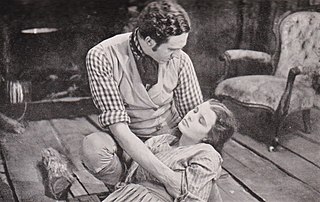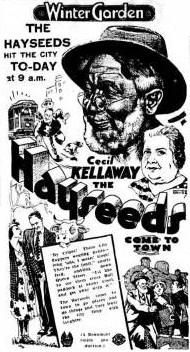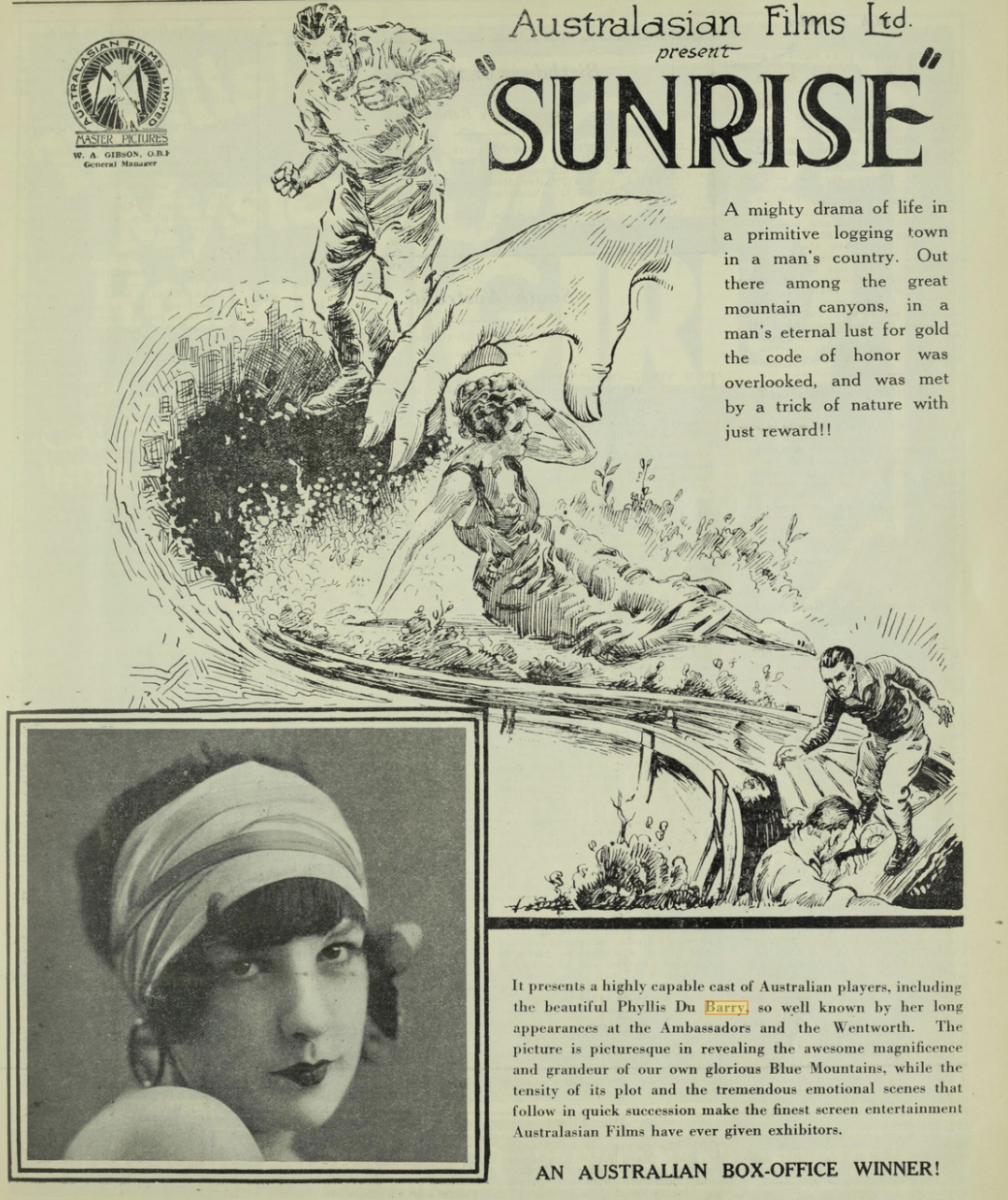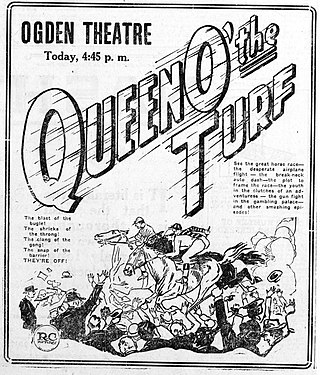Related Research Articles
George Edwards was an Australian actor, comedian, vaudevillian and producer. known as The Man of a Thousand Voices.

Fanny by Gaslight is a 1944 British drama film, directed by Anthony Asquith and produced by Gainsborough Pictures, set in the 1870s and adapted from a 1940 novel by Michael Sadleir.
For the Term of His Natural Life is a 1927 Australian film based on the 1874 novel by Marcus Clarke, directed, produced and co-written by Norman Dawn. It was the most expensive Australian silent film ever made and remains one of the most famous Australian films of the silent era.

Heritage is a 1935 Australian historical film directed by Charles Chauvel.
That Certain Something is a 1941 Australian musical film directed by Clarence G. Badger and starring Megan Edwards and Thelma Grigg. The plot concerns an American film director who decides to make a musical in Australia. It was the last film directed by Badger, a noted silent era director.

The Hayseeds is a 1933 Australian musical comedy from Beaumont Smith. It centres on the rural family, the Hayseeds, about whom Smith had previously made six silent films, starting with Our Friends, the Hayseeds (1917). He retired from directing in 1925 but decided to revive the series in the wake of the box office success of On Our Selection (1932). It was the first starring role in a movie for stage actor Cecil Kellaway.
The Silence of Dean Maitland is a 1914 Australian silent film directed by Raymond Longford. It is an adaptation of the 1886 novel of the same name by Maxwell Gray which was later filmed by Ken G. Hall in 1934. It is considered a lost film.
The Dinkum Bloke is a 1923 Australian silent film directed by Raymond Longford. Despite the title and the presence of Arthur Tauchert and Lottie Lyell in the cast, the film is not a direct sequel to The Sentimental Bloke (1919) or Ginger Mick (1920).

Sunrise is a 1926 Australian silent film co-directed by Raymond Longford, who took over during filming.
The Breaking of the Drought is a 1920 Australian silent film from director Franklyn Barrett based on the popular play by Bland Holt and Arthur Shirley. According to Graham Phillips, this film is one of the most damaged films in Australia's film archive, although few sequences have severe damage in the film.
Caught in the Net is a 1928 Australian silent film about a woman in high society starring Zillah Bateman, a British theatre star who was touring Australia at the time. Only part of the film survives.

Silks and Saddles is a 1921 Australian silent film set in the world of horse racing that was directed by John K. Wells.
Those Who Love is a 1926 silent film, produced in Australia, about the son of a knight who falls in love with a dancer. Only part of the film survives today and it is held by the National Film and Sound Archive.
The Monk and the Woman is a 1917 Australian silent film directed by Franklyn Barrett. It is considered to be lost.
Sunshine Sally is a 1922 Australian silent film directed by Lawson Harris set in the Sydney suburb of Woolloomooloo. Most of the movie survives today.
Should a Doctor Tell? is a 1923 Australian silent film directed by P. J. Ramster and Alexander Butler. It is a high society melodrama about a man forced to be inspected by a doctor prior to his marriage, who discovers he has venereal disease.
Painted Daughters is a 1925 Australian silent film directed F. Stuart-Whyte. Only part of it survives today.
Just Peggy is a 1918 Australian silent film starring Sara Allgood and Gerald Henson, who were married in real life. It is a lost film.
For the Term of His Natural Life is a 1983 Australian three-part, six-hour television miniseries based on the classic 1874 novel of the same name by Marcus Clarke. Each episode aired for two hours on Nine Network on 23 May, 30 May and 6 June 1983.
Harriet Adelaide Stirling was a South Australian philanthropist.
References
- ↑ "Filmography", Cinema Papers, June–July 1980 p175
- 1 2 3 Andrew Pike and Ross Cooper, Australian Film 1900–1977: A Guide to Feature Film Production, Melbourne: Oxford University Press, 1998, 116.
- ↑ ""THE DINGO."". The Sydney Morning Herald . National Library of Australia. 2 July 1923. p. 5. Retrieved 29 July 2012.
- ↑ Everyones, Everyones Ltd, 1920, retrieved 4 June 2018
- ↑ "AMUSEMENTS,". The Advertiser . Adelaide: National Library of Australia. 11 February 1924. p. 6. Retrieved 29 July 2012.
- ↑ ""THE DINGO."". Daily Herald . Adelaide: National Library of Australia. 8 February 1924. p. 2. Retrieved 29 September 2013.